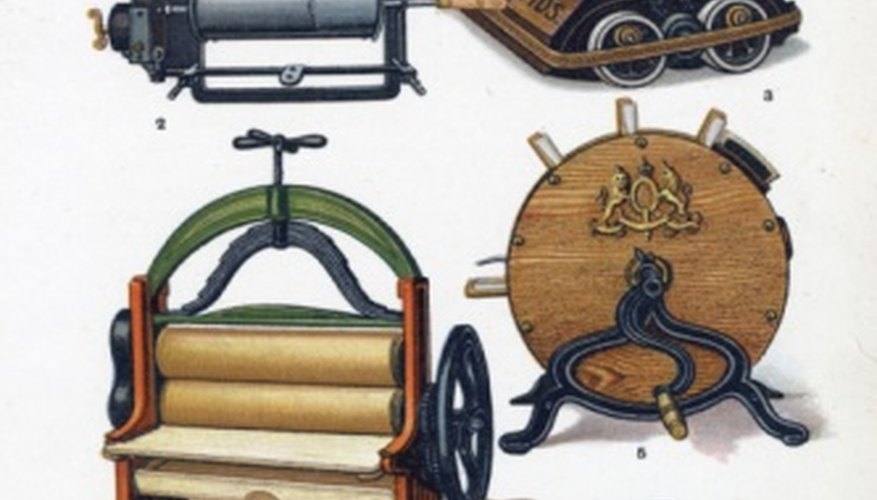Once upon a time, many homes had a mangle to wring and squeeze the excess water out of clothes. With the advent of washing machines and dryers, mangles fell out of use. They are now coming back into popularity: wringing your wet clothes before hanging them up or putting them in the dryer saves drying time and electricity. Modern mangles or reconditioned vintage units are expensive, however. You can make your own mangles and clothes wringers using easily-available materials and tools.
Rolling pin method
Lay a large dry bath towel or beach towel on a clean wooden board. Place an item of wet laundry length-ways along the middle of the towel. Fold the sides of the towel over the wet laundry. For best results, the laundry should have been squeezed to get rid of some of the excess water.
- Lay a large dry bath towel or beach towel on a clean wooden board.
- Place an item of wet laundry length-ways along the middle of the towel.
Roll a wooden rolling pin over the folded towel and wet laundry, pressing down as firmly as you can. Move the towel and laundry as needed so that you press the whole of the garment.
Unwrap the laundry and reposition in the towel so that any dry areas of the towel are in contact with the damp fabric. Press with the rolling pin again.
Repeat with a fresh towel if necessary. Hang up damp towels and laundry to air dry or place in the dryer to dry completely.
Towel and rope method
Fold one end of a large beach towel over and sew firmly in place to make a tube of fabric at the top of the towel. Thread a length of strong cord or thin rope through this tube. Do the same at the other end.
Fasten the rope at one end of the towel to a section of broom handle, a length of thick dowel or a stick. The stick should be short enough to handle easily but long enough to accommodate both your hands.
Tie the other end of the towel to a sturdy object such as a fence post or item of outdoor furniture. If you don't have an outdoor area in which to use this wringer, use it in the bathroom.
Draw the towel out like a hammock. Place the item to be wrung in the "hammock" length-ways, twisting the towel around it so that it is folded securely and won't fall out.
- Fold one end of a large beach towel over and sew firmly in place to make a tube of fabric at the top of the towel.
- Place the item to be wrung in the "hammock" length-ways, twisting the towel around it so that it is folded securely and won't fall out.
Hold the stick in both hands and begin to twist it so that the towel, with the laundry inside it, is twisted into a rope. Keep twisting until you have wrung as much water as you possibly can from the item of laundry. Finish the drying process outdoors or using a dryer.
Bucket method
Drill three or four half-inch holes around the outside of the largest bucket, at the base. This will be the collector bucket -- water from the wet laundry will be collected here and will then drain out of the holes.
Drill several quarter-inch holes in the bottom of one of the smaller buckets. This will be your strainer bucket.
Place the strainer bucket inside the collector bucket. Place the wet clothes in the strainer bucket. Place the undrilled bucket in the strainer bucket. Place the lid on the undrilled bucket to make a seat. Sit on the seat bucket until water stops running out of the container bucket.
- Drill three or four half-inch holes around the outside of the largest bucket, at the base.
- Place the undrilled bucket in the strainer bucket.
Remove the seat bucket and reposition the laundry. Replace the seat bucket. Sit down on the seat bucket again until water stops running. Hang up the clothes or place in the dryer to finish drying.
TIP
Keep your laundry supplies inside the seat bucket of the bucket press. Hang wet laundry up for a few minutes before wringing to let water drain to one end of the fabric, then wring from the drier end to the wet end. Try to avoid doing laundry on damp days if at all possible. When drying indoors, try to keep the laundry to one room such as the bathroom and leave a window open to prevent moisture accumulating in your home.
WARNING
Harsh wringing can damage delicate items. These should be gently squeezed by hand and allowed to drip dry.
